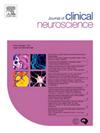Expanded applications of knotless tissue control devices in neurosurgical cranial and spinal applications
IF 1.9
4区 医学
Q3 CLINICAL NEUROLOGY
引用次数: 0
Abstract
Objectives
Effective wound closure is essential to neurosurgical procedures. Historical rates of neurosurgical wound complications range from 7 to 14 %. Knotless suturing with barbed sutures may offer effective closure rates but has had limited evaluation of safety in neurosurgical applications.
Methods
Consecutive patients undergoing cranial, spinal, and peripheral nerve neurosurgical procedures from 12/2022 until 7/2024 were included in a quality improvement initiative. A retrospective review of demographics, past medical history, and operative and postoperative variables was undertaken. The primary outcome of interest was wound complications, including surgical site infection (SSI), dehiscence, or CSF leak. A cost analysis of suture treatment was also compared. A comparison to historical control rates (7%) was performed (one-sample proportional z-test).
Results
A total of 195 consecutive patients were identified, with 10 wound-related complications including 3 superficial dehiscence treated with washout, 2 pseudomeningoceles, 2 cerebrospinal fluid leaks with meningitis, and 1 each of deep dehiscence with washout, superficial dehiscence with antibiotics, and epidural hematoma. A total of 53 (27.2 %) underwent cranial, 140 (71.8 %) spine, and 3 (1.0 %) peripheral nerve procedures. Ten patients (5.1 %) had incision complications with no difference to historical controls (p = 0.3). Cost analysis showed a range 0.35–3.03X cost differences using the knotless suture technique for different neurosurgical applications.
Conclusion
Knotless suture techniques can be an effective closure method for a variety of neurosurgical techniques comparable to expected wound complication rates. We expand on the potential applications of this technology compared with prior studies. Further studies will be necessary to confirm these findings.
求助全文
约1分钟内获得全文
求助全文
来源期刊

Journal of Clinical Neuroscience
医学-临床神经学
CiteScore
4.50
自引率
0.00%
发文量
402
审稿时长
40 days
期刊介绍:
This International journal, Journal of Clinical Neuroscience, publishes articles on clinical neurosurgery and neurology and the related neurosciences such as neuro-pathology, neuro-radiology, neuro-ophthalmology and neuro-physiology.
The journal has a broad International perspective, and emphasises the advances occurring in Asia, the Pacific Rim region, Europe and North America. The Journal acts as a focus for publication of major clinical and laboratory research, as well as publishing solicited manuscripts on specific subjects from experts, case reports and other information of interest to clinicians working in the clinical neurosciences.
 求助内容:
求助内容: 应助结果提醒方式:
应助结果提醒方式:


